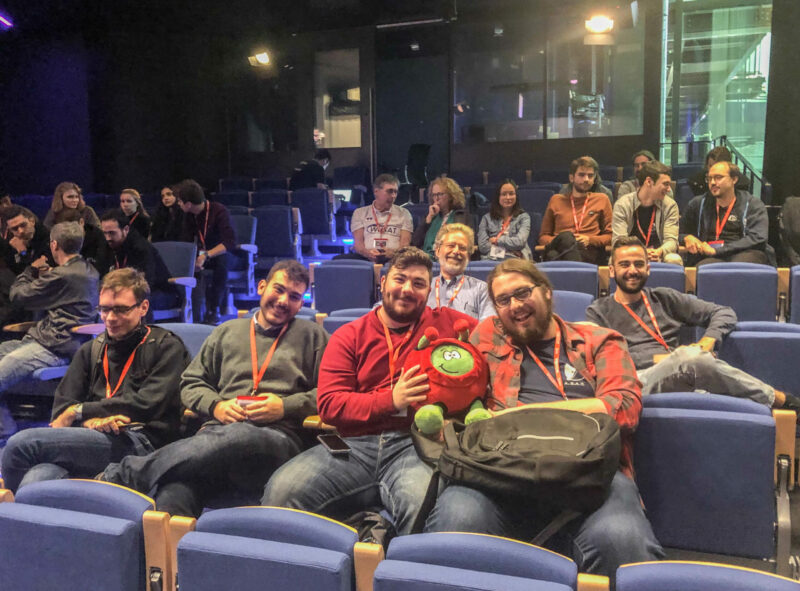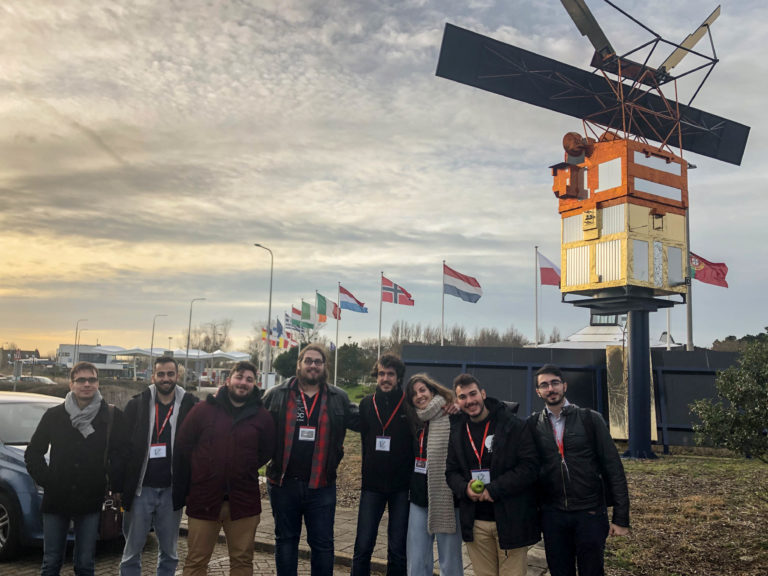Post Date: January 14, 2020

[DISCLAIMER: This post was created while AcubeSAT was under the A.S.A.T. team. Since 15.01.2021, the AcubeSAT project is part of SpaceDot.]
Great moments usually do not last for a long time, but they are the milestones in the timeline which when discussed, brighten the faces of the ones involved. Those moments are usually the outcome of hard work and commitment, and such a moment was our participation in the Fly YourSatellite! Selection Workshop 2019.
Five different flights, one week of partial sleep deprivation, one week of learning and networking just passed by. All eight of us participating in the FYS Selection Workshop came back with new knowledge, new ideas for improvement, and future planning for the nanosatellite project “AcubeSAT”. Our responsibility now is to transfer all this technical and organizational knowledge we gained to the rest of the team and proceed onwards with the design finalization of our nanosatellite. Throughout the workshop, the atmosphere was very inspiring from the very first day, as described in the post about the first days of the workshop found here (Fly your Satellite! One step closer!), as a result giving us a tremendous boost to be more efficiently organized and also work even harder to achieve our goal. One thing that was not prevalent from the first moments is the amount of work required upon successful acceptance in the Fly Your Satellite! program. There will be meetings with ESA experts to aid in our efforts of making the mission become a reality, testing and qualification campaigns for all the parts of the nanosatellite will be performed and for sure flights to Belgium, where ESA’s testing facilities are, will be frequently scheduled. The demanding nature of the program does not stop us from moving on, instead is a driver to take a step further and finally build our satellite

Finalizing our design and proceeding with the design of the test and qualification campaign, improving our design based on the test results and integrating all the parts to test the full functionality has a huge educational value for us since we are not aerospace engineers. We are not even experts in space-related issues. The interdisciplinarity of some subsystems and the combination of the engineer’s and the scientist’s way of thinking gives exceptional abilities for the future to anyone involved in the project. For anyone who wants to get into the field of aerospace engineering, currently, in our university, there is only one way and that is through the involvement with projects like ours. Our project provides students with the required knowledge and expertise to be able to continue with the studies further on. Realizing how important everything discussed so far is, especially for undergraduate students, is making us think that it was all worth it; the efforts and time we have “spent” to make this project become a reality.
Our project and our track record so far, looking back the difficulties we faced the past years, remembering all the sleep-deprived nights passed to meet the required deadlines for the design of our mission and all the frustration moments we went through, is a great example of determination, dedication, and commitment to a goal or goals. We achieved the seemingly impossible task for undergraduate students and that is to design a nanosatellite.

A striking thing is the amount of help we received from companies and our professors when we presented them with our project, eliminating the stereotype that undergraduates can not do research or great projects. Seeing all that, it is clear enough that through determination, devotion and infinite willpower everything is possible and achievable, with frustrations and bad moments being there to aid in the process of getting better.
